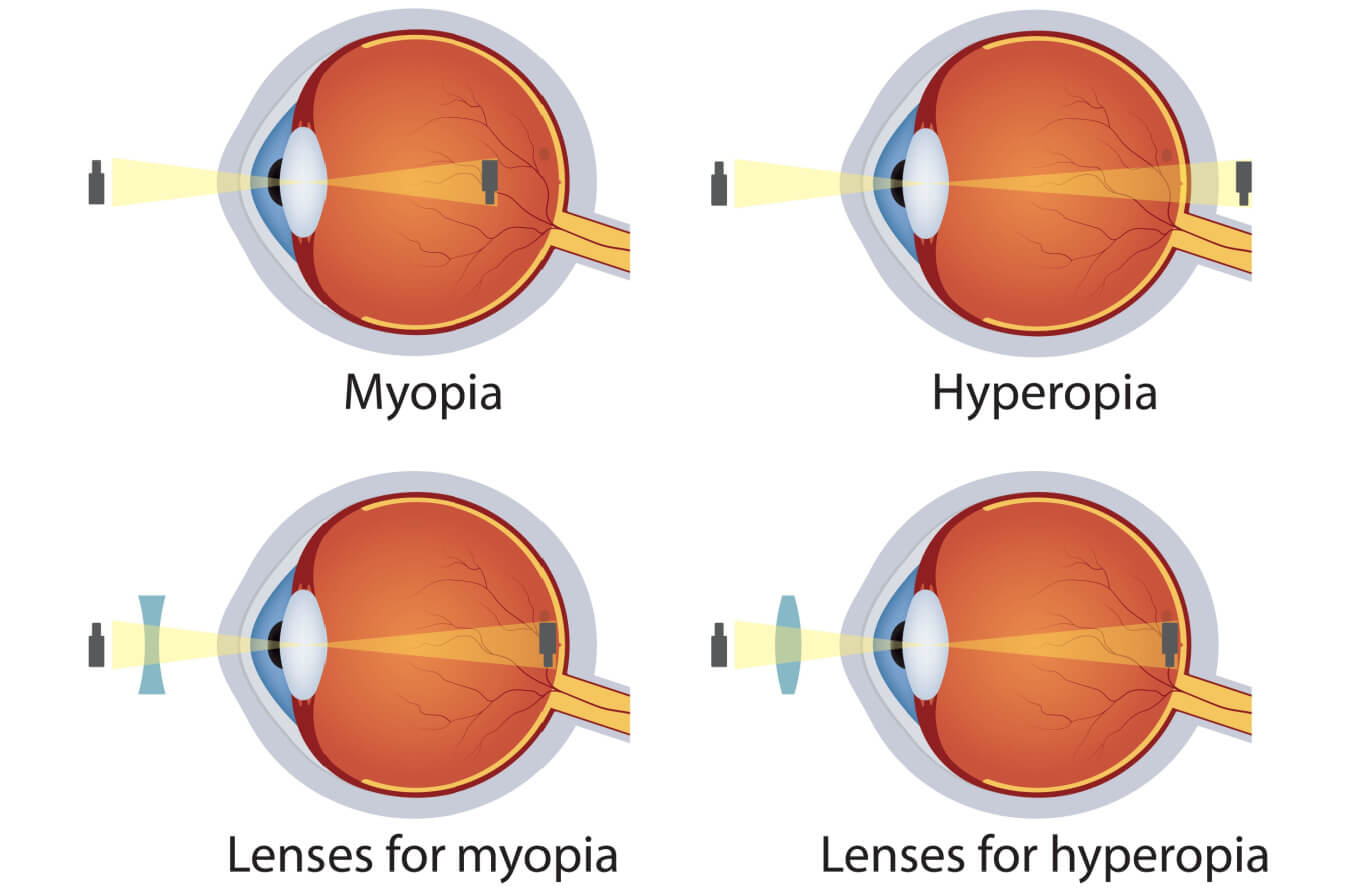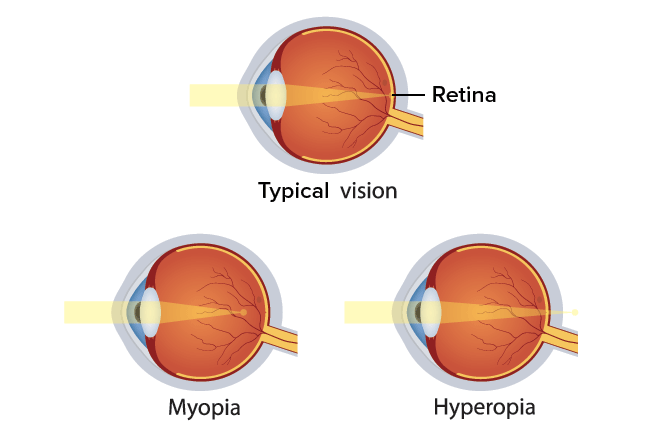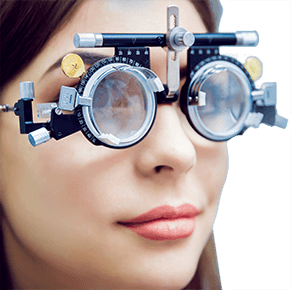Myopia vs. hyperopia: What’s the difference?

Myopia vs. Hyperopia
Myopia and hyperopia are common — but essentially opposite — types of vision problems. The biggest difference between them is where objects appear in focus. People with myopia (nearsightedness) see nearby objects more clearly. People with hyperopia (farsightedness) see distant objects more clearly.
Conversely, nearsightedness makes distant objects look blurry. Farsightedness blurs objects that are close to you. The difference between being nearsighted or farsighted is a matter of where light focuses inside the eye.

After light enters our eye through the pupil, it needs to be neatly focused on the retina in the back of the eye. When light enters the eye and does not focus properly on the retina, it causes blurry vision.
| Nearsightedness | Farsightedness | |
|---|---|---|
| Medical term | Myopia | Hyperopia or hypermetropia |
| What is in focus? | Close-up objects | Distant objects |
| What looks blurry? | Distant objects | Close-up objects |
| Eyeball shape (in most cases) | Too long (front to back) | Too short (front to back) |
| Where light focuses inside the eye | Too far in front of the retina | Too far past the retina |
What is nearsighted vision?
The medical term for nearsightedness is myopia. In a nearsighted eye, light focuses too far in front of the retina, instead of directly on it.
This usually happens because the eyeball has grown too long from front to back. But it can also be due to the shape or location of the cornea and lens in the eye.
When light focuses in front of the retina, distant objects look blurry and nearby objects look clearer.
Nearsightedness usually develops during childhood and gets progressively worse throughout adolescence. It then stabilizes during early adulthood. Children who have progressive myopia may need specialized glasses, contacts or eye drops to slow the progression. This is called myopia control.
About four times as many people have myopia versus hyperopia. Approximately 40% of Americans are nearsighted, while only 5-10% are farsighted.
SEE RELATED: Why myopia progression in children is a growing concern
What is farsighted vision?
The medical term for farsightedness is hyperopia. It's the opposite of nearsightedness. Hyperopia is usually caused by an eyeball that's too short, causing light to focus behind the retina.
Farsightedness usually only makes close objects look blurry, and mild cases might not affect vision at all. In young children, the eyes’ accommodation system may be able to overcome small amounts of hyperopia.
However, high levels of hyperopia can cause objects at all distances to appear out of focus.
Most children are born with hyperopia, meaning they are farsighted at birth. Childhood hyperopia typically improves as the eyes grow and develop.
The similarities between myopia and hyperopia
Myopia and hyperopia are both types of refractive errors — slight variations in the eye that affect its ability to focus light. These variations are quite common, similar to differences in height.
Nearsightedness and farsightedness are both easily corrected with prescription eyeglasses or contact lenses. LASIK, PRK and other refractive surgeries can also correct refractive errors. They are good options once vision stabilizes, usually in a person’s early 20s.
If left uncorrected, the two types of refractive error can also share common signs and symptoms, including:
Squinting to see clearly
Fatigued, “tired” eyes and eye rubbing
Eye strain and headaches
If you experience any of these symptoms, be sure to schedule a comprehensive eye exam with an eye doctor.
READ MORE: How to manage myopia and slow its progression
Myopia stabilization and associated factors among participants in the Correction of Myopia Evaluation Trial (COMET). Investigative Ophthalmology & Visual Science. December 2013.
Increased prevalence of myopia in the United States between 1971-1972 and 1999-2004. Archives of Ophthalmology. December 2009.
Prevalence of refractive error in the United States, 1999-2004. Archives of Ophthalmology. August 2008.
Farsightedness fact sheet. National Eye Institute. Accessed July 2022.
Farsightedness. Cleveland Clinic. November 2020.
Eye disorders. Nelson Pediatric Symptom-Based Diagnosis. 2018. Elsevier Inc.
Optics of the human eye. Ophthalmology. 2019.
How to know if your child needs glasses. Johns Hopkins Medicine. Accessed July 2022.
Eye strain. Cleveland Clinic. August 2019.
Page published on Thursday, January 23, 2020
Page updated on Tuesday, April 4, 2023
Medically reviewed on Tuesday, July 19, 2022






